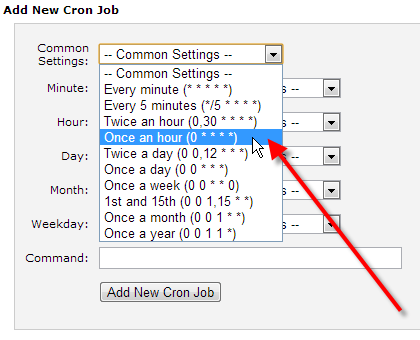Replace WordPress Cron with a Real Cron Job
“Replace WordPress Cron with a Real Cron Job” Documentation by “WPWeb”Replace WordPress Cron with a Real Cron Job
WordPress uses a file called wp-cron.php as a virtual cron job, or scheduled task in order to automate things like publishing scheduled posts, checking for plugin or theme updates, sending email notifications and more.
By default WordPress is setup to call wp-cron.php everytime someone visits your WordPress website when a scheduled task is present, to basically ask "is it time to do anything yet?".
On low traffic sites this is perfectly fine, but when visitors roll in, checking multiple times for scheduled tasks can be very inefficient and lead to resource usage problems for your server, plus make your website load slower.
Disable default wp-cron.php behavior
We can easily tell WordPress to let us handle the execution of wp-cron.php with the wp-config.php file.
Step 1: Open your wp-config.php file with the cPanel File Manager Code Editor
Step 2:
Go to the bottom of the database settings in wp-config.php typically around line 37.
Add the code below highlighted in red:
/** The Database Collate type. Don't change this if in doubt. */
define('DB_COLLATE', '');
define('DISABLE_WP_CRON', 'true');
Step 3: Click Save
Now WordPress will not automatically run the wp-cron.php script each time your site gets a new visitor.
Setup manual cron job for wp-cron.php
We do not want to leave WordPress without any ability to automate tasks it might need to do. But at least now that it is not running for every single visitor, we can have way more control over when these tasks take place.
Step 1: Login into cPanel
Step 2: Under the Advanced section, click on Cron Jobs.
Step 3: Select an appropriate time from the Common Settings drop-down.
Note : An appropriate time means if you had selected 'Hourly' for the 'Schedule Wall Posts' from the plugin settings then should select 'Once an hour' from common settings.

Step 4: Finally fill in the code to run our cron job and click Add New Cron Job.
cd /home/username/public_html; php -q wp-cron.php
OR
php -q /home/username/public_html/wp-cron.php
Where username is your cPanel user name.
Keep in mind that the /home/userna5/public_html path would be for a primary domain, if you're using an addon domain, or have WordPress installed in a sub-directory you'll want to be sure to update your path.
Step 5: You should see that your new cron job was added successfully.
Now your WordPress website should be safely running scheduled tasks via the wp-cron.php script, but only at set intervals.